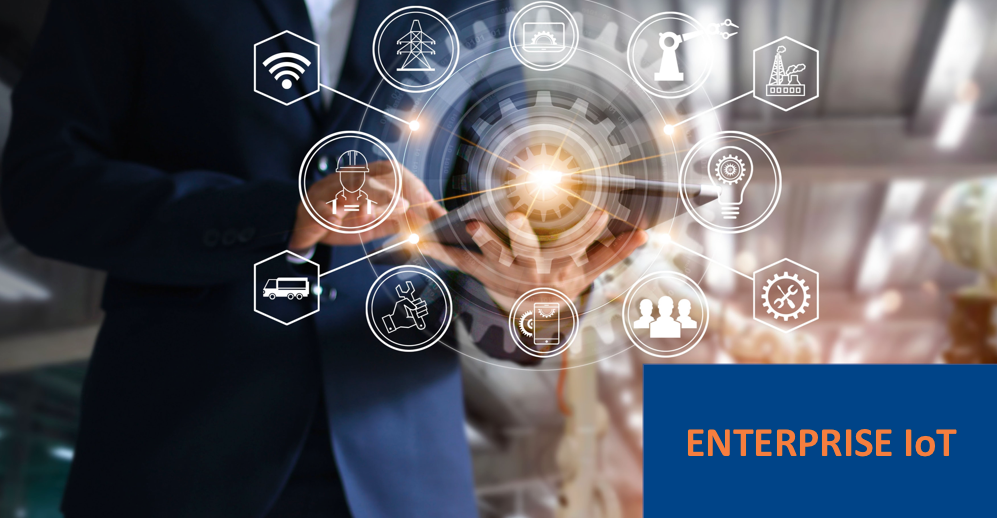Is LoRaWAN the Next Utility for the Enterprise?

It’s no secret that LoRaWAN is becoming the technology of choice for IoT deployments that require long range and low power consumption.
In the past year, certified LoRaWAN devices increased by 34% and now make up the greatest number of LPWAN sensors on the market, according to the LoRa Alliance. And the growth doesn’t stop there. One study predicts the total number of LPWAN devices will grow from 1.8 billion in 2019 to over 2.7 billion by 2025, including more than 1 billion featuring LoRaWAN connectivity.
Water utilities have driven early demand for LoRaWAN, and the energy sector will continue to play a major role as multiservice utilities (natural gas and electric) deploy the technology for metering and safety initiatives. But as the availability of LoRaWAN networks and end devices have grown around the world, other businesses are being drawn to the benefits of the technology and rapidly implementing LoRaWAN networks to instrument their operations.
Enterprises see the potential of IoT deployments to better manage their infrastructure and resources, and as the LoRaWAN ecosystem has grown so have large-scale Enterprise IoT deployments. In fact, GlobalData estimates enterprise usage of LoRa and LoRaWAN will outpace the overall market’s growth over the next few years. Among the billions of LoRaWAN devices that will be deployed over the next few years, enterprise usage will grow from 200 million connections in 2019 to more than 600 million by 2024.
LoRaWAN for Enterprise Deployments
IoT is making its way into every facet of the enterprise, from building infrastructure and energy management to indoor and outdoor environmental monitoring, worker safety and security, asset tracking, food service safety and compliance, facilities management and more. All require an interconnected data-driven ecosystem, and the ease of deployment and cost-effective nature of LoRaWAN now makes it possible to build networks and add sensors to places where it was previously infeasible.
Supporting rapid scale, enterprises adopting these solutions have the option of deploying their own indoor and/or outdoor gateways and using Senet’s platform to manage the resulting network infrastructure. As deployments grow and the data provided by IoT connections becomes mission-critical for protecting work environments and operating profitably, the IoT becomes an embedded part of businesses. Much like energy and water that enterprises need to run their businesses, their IoT infrastructure is becoming a necessary “utility”.
The Importance of Choosing the Right Network
Throughout their IoT journey, many enterprises have experienced challenges as they’ve experimented with platforms and technologies that weren’t designed for enterprise scale. And growing numbers are starting to realize that legacy network architectures and deployment models are not well suited to support large multi-location IoT deployments for monitoring and managing critical infrastructure.
Not all LoRaWAN networks are built the same, particularly for enterprises. One-off LoRaWAN gateway deployments may work for everyday business applications but not for critical infrastructure monitoring. After all, if data from a room occupancy sensor is delayed, it may take longer to automatically shut the lights off. But what if a pipe bursts or an environmental hazard arises? Avoiding major physical and/or financial damage to a business requires enterprises have a reliable network with predictable performance, guaranteed uptime and easy access to actionable network and sensor performance data.
Similarly, developer networks are useful for IoT pilots and development work. When an enterprise is considering various IoT use cases, these networks can provide the tools needed to test a small-scale deployment to learn how to set it up, glean data from it and develop a business case for a larger scale deployment.
Decentralized hotspots may show promise for consumer uses within urban environments, but the gateway owners tend to be individuals with minimal networking experience. If someone accidentally unplugs their gateway, visibility of an asset may be significantly delayed, with no redundancy built in to the network to address the outage and no direct customer service available.
Underestimating the complexity of IoT network design and the operation and management skills required to support large-scale IoT deployments, can severely impact the success an enterprise IoT deployment.
Carrier-Grade is Enterprise-Grade
For enterprise IoT deployments that reach production, the necessity of a carrier-grade solution quickly becomes evident, because homegrown networks or relying on a community fueled by DIY participation can lead to gaps in coverage, unanticipated downtime for updates and less reliability than an enterprise requires.
In contrast, Senet’s carrier-grade LoRaWAN network is backed by SLAs that are tailored for individual business requirements, ensuring five 9s of uptime, seamless network server upgrades and 24/7 support from customer service and technical teams.
Senet’s unique model offers private networks, public networks, or a combination of both. Sophisticated network design tools and services make it simple to design a LoRaWAN network for an enterprise’s individual requirements, to ensure coverage and performance for in-building, outdoor and campus environments.
The Way Forward
The IoT enables enterprises to collect data from everywhere they need, and cloud-deployed architectures like the one developed by Senet make it easier to deploy and manage gateways, sensors and other devices.
Enterprises no longer need to locally provision network access at each location. Centralized control, reduces the need for skilled labor and enables an out-of-the-box deployment model that is “plug and play.” And once deployed, enterprises gain end-to-end security, which combines with central management to empower businesses to manage and protect all IoT devices on the network.
Enterprises are evolving to become increasingly data-driven. Their networks need to evolve with them. The new model of low-cost, flexible infrastructure paired with modern cloud-based network management is built for today’s connected enterprise.
Carrier grade LoRaWAN networks are here now, ready to power your business.
For more information on Senet’s carrier-grade network services for critical infrastructure and essential business applications, download Senet’s new whitepaper: The Value of Carrier-Grade Network Service for the Delivery of LoRaWAN IoT Solutions.
